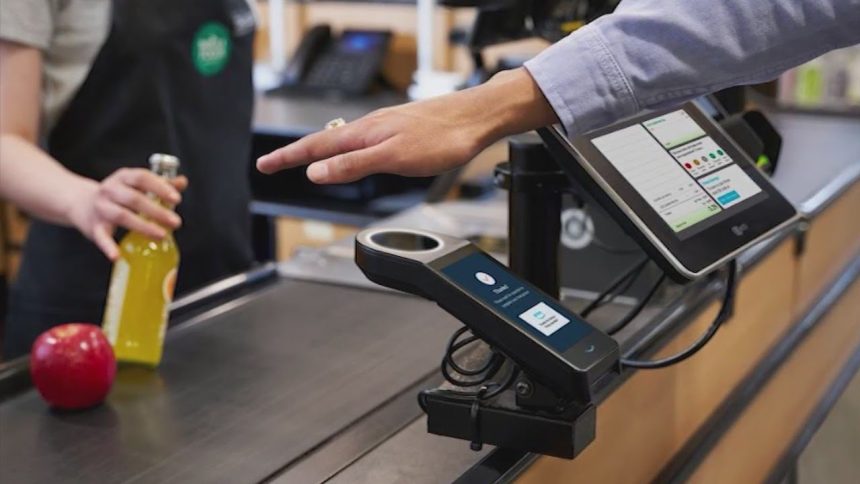The Chinese tech giant Tencent recently developed a revolutionary payment system called “Palm Payment.” With this cutting-edge method, people can make payments by holding their hands over a palm reader. This system is linked to the widely utilized WeChat Pay network. It uses registered biometric information, such as distinctive vein patterns and palm prints, to start safe payments.

In a video released on Douyin, the Chinese equivalent of TikTok, in late September. Tencent presented this offer to a select group of Chinese consumers. An individual who sounds like a WeChat representative is heard telling participants in the video to place their hands in front of recognition equipment. So it may record their palm prints in exchange for the offer.
The voice responds that this feature started half a year ago. But just recently arrived in the Chinese city of Guangzhou when the user who subsequently submitted the video inquired when this feature was released.
- Advertisement -
Tencent, the firm that operates the payment system WeChat Pay. It has been trying out palm-print payment devices in the nation for months. Supporters of palm-print recognition claim that the technology is more reliable and secure than other biometrics. And that it is more difficult to identify a person if their palm-print picture is compromised.
Therefore, the technology that recognizes distinct palms, including the skin’s visible lines and veins, has fast become the next frontier of biometric recognition. While fingerprint and face recognition has already been widely employed in identity verification scenarios. Although a paucity of training data has hindered the development of the system, numerous researchers engaged claim that it is now virtually ready for widespread commercial deployment.
The technology may soon be available everywhere in the country

Since the business is vying for supremacy with Alipay, the new technology is enticing. Furthermore. Allowing users to pay by waving their hands up to a few inches from the camera appears preferable to facial or fingerprint recognition. As China continues to struggle with continued zero-covid policies that require people to still wear masks and avoid physical contact. To advance the usage of palm-print recognition in daily life and on a genuinely huge scale. Tencent is providing users with tiny economic incentives in exchange for their participation and data.
Although Amazon was the first significant internet business to formally implement palm-print scanners in its physical stores in the US (it has subsequently spread to almost 180 sites). Thanks to WeChat Pay’s widespread popularity in all types of stores. It is already used by over 800 million people and 50 million vendors in China.
Even while palm-print recognition has advantages, its widespread adoption would pose hazards to consumer privacy and provide practical challenges. Analysts and privacy advocates do, in fact, still have doubts about whether palm-print recognition should be used in payments and what would happen if it were.



